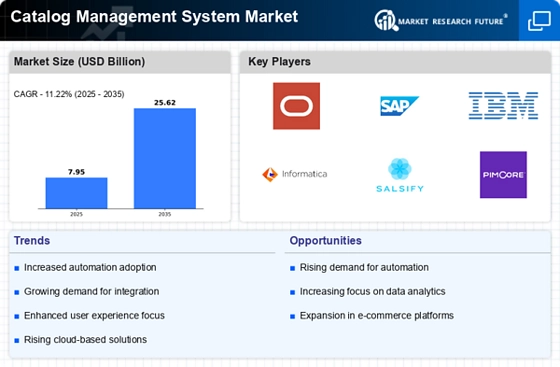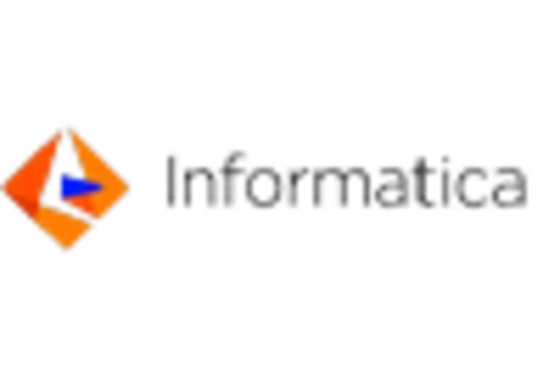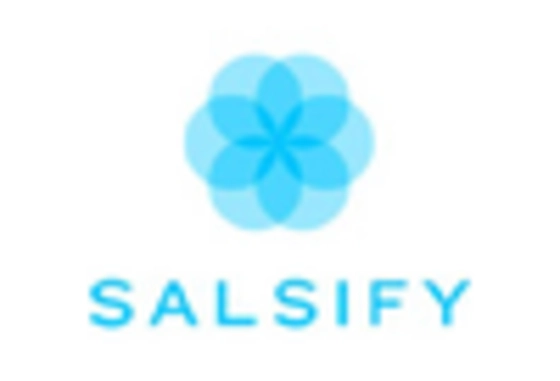Rising E-commerce Adoption
The increasing adoption of e-commerce platforms is a pivotal driver for the Catalog Management System Market Industry. As businesses transition to online sales, the need for efficient catalog management becomes paramount. In 2025, e-commerce sales are projected to reach approximately 6 trillion USD, highlighting the necessity for robust catalog systems that can handle vast product assortments. Companies are seeking solutions that streamline product information, enhance user experience, and facilitate seamless transactions. This trend indicates a growing demand for catalog management systems that can integrate with various e-commerce platforms, ensuring that businesses can maintain accurate and up-to-date product listings. Consequently, the Catalog Management System Market Industry is likely to experience substantial growth as organizations invest in technology that supports their online retail strategies.
Emergence of Advanced Analytics
The emergence of advanced analytics tools is reshaping the Catalog Management System Market Industry. Organizations are increasingly leveraging data analytics to gain insights into customer behavior, preferences, and trends. By integrating analytics into catalog management systems, businesses can optimize their product offerings and tailor marketing strategies to meet consumer demands. The analytics market is projected to grow substantially, with estimates indicating a value exceeding 300 billion USD by 2025. This growth suggests that catalog management systems equipped with analytical capabilities will be in high demand, as they enable companies to make data-driven decisions that enhance operational efficiency and customer engagement.
Increased Focus on Data Accuracy
Data accuracy is becoming increasingly critical in the Catalog Management System Market Industry. As organizations strive to provide customers with precise product information, the demand for systems that ensure data integrity is on the rise. Inaccurate product data can lead to customer dissatisfaction and lost sales opportunities. Therefore, businesses are investing in catalog management solutions that offer advanced data validation and synchronization features. The market for data management solutions is expected to grow significantly, with estimates suggesting a compound annual growth rate of over 20 percent in the coming years. This trend underscores the importance of reliable catalog management systems that can maintain high standards of data accuracy, ultimately enhancing customer trust and loyalty.
Shift Towards Cloud-Based Solutions
The shift towards cloud-based solutions is transforming the Catalog Management System Market Industry. Organizations are increasingly adopting cloud technologies to enhance flexibility, scalability, and cost-effectiveness in managing their product catalogs. Cloud-based catalog management systems allow businesses to access real-time data from anywhere, facilitating collaboration and improving operational efficiency. The cloud services market is expected to grow significantly, with projections indicating a value of over 800 billion USD by 2025. This trend suggests that catalog management systems hosted in the cloud will become increasingly popular, as they offer businesses the agility needed to adapt to changing market conditions and consumer preferences.
Growing Need for Compliance and Regulation
The growing need for compliance with industry regulations is a significant driver in the Catalog Management System Market Industry. As businesses face increasing scrutiny regarding data privacy and product information accuracy, the demand for catalog management systems that ensure compliance is rising. Regulations such as GDPR and various industry-specific standards necessitate robust catalog solutions that can manage and protect sensitive data. Companies are likely to invest in systems that not only streamline catalog processes but also provide compliance features. This trend indicates a potential increase in the market size for catalog management systems, as organizations prioritize solutions that mitigate legal risks and enhance operational transparency.

















Leave a Comment